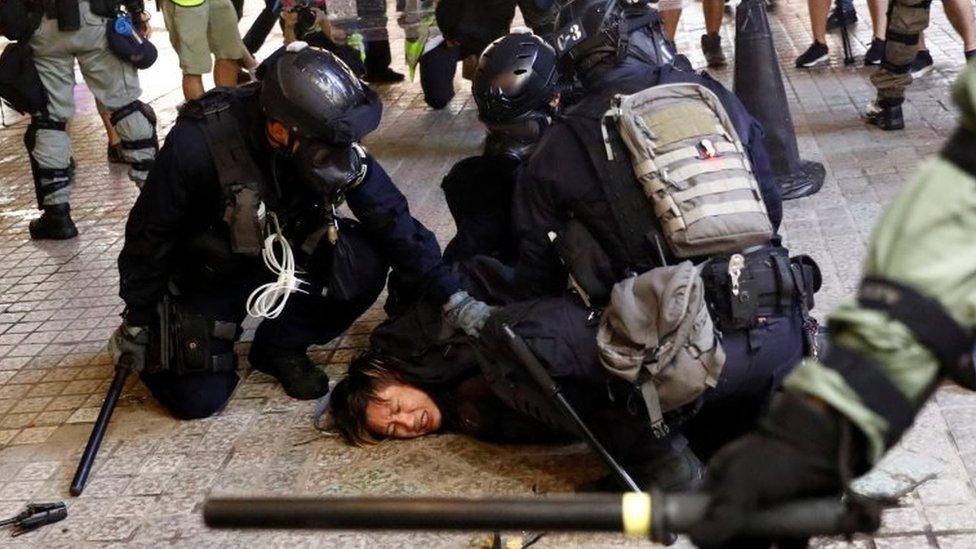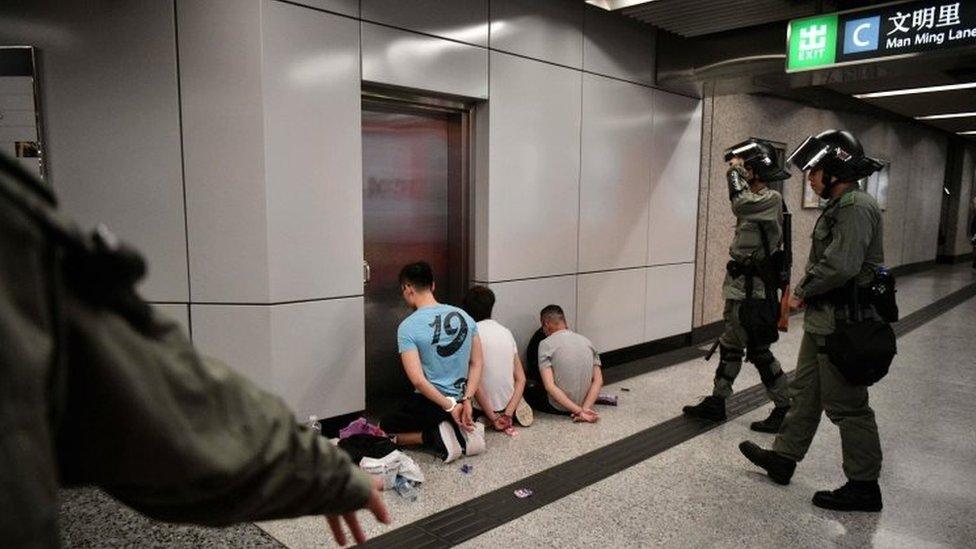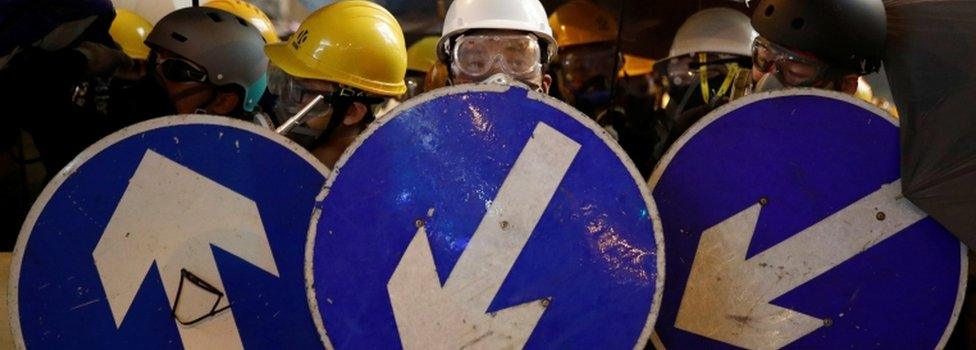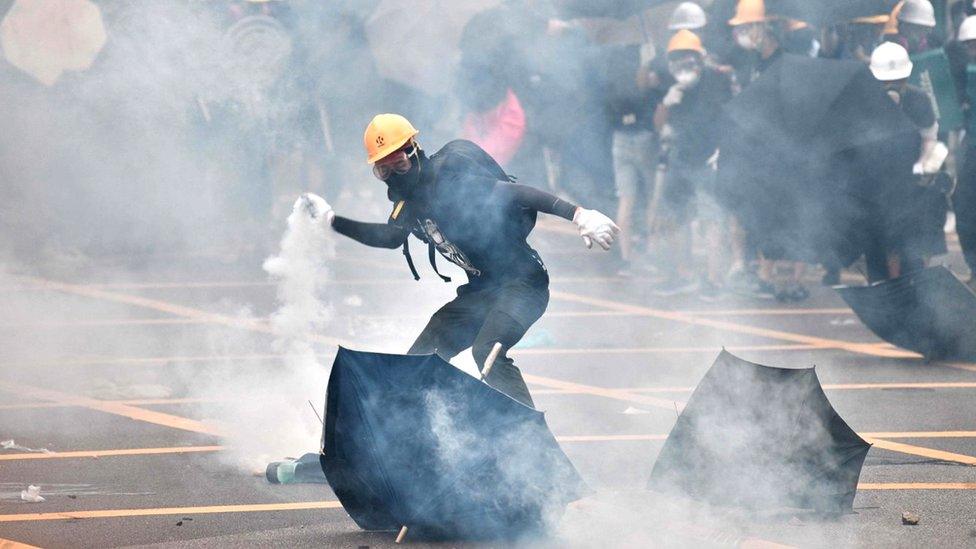Hong Kong police storm metro system after protests
- Published
Police hit people with batons and used pepper spray
Hong Kong police have violently tackled suspected protesters after thousands of people marched in the city in defiance of a ban.
Images show police hitting people with batons and using pepper spray on a train in Hong Kong's metro.
Police say they were called to the scene amid violence against citizens by "radical protesters".
However it is unclear if all those injured and arrested in the metro system were involved in demonstrations.
People took to the streets on Saturday to mark the fifth anniversary of China's government banning fully democratic elections in Hong Kong.

Hong Kong has seen 13 successive weeks of protests
Protesters lit fires and attacked the parliament building, with petrol bombs bring thrown.
In response, police used tear gas, rubber bullets and water cannon to disperse crowds, and fired live warning shots as they tried to clear the streets.
The latest protests came just a day after the arrest of several key pro-democracy activists and lawmakers in China's special administrative region.
Hong Kong has now seen 13 successive weeks of demonstrations.
The movement grew out of rallies against a controversial extradition bill - now suspended - which would have allowed criminal suspects to be sent to mainland China for trial.
It has since become a broader pro-democracy movement in which clashes have grown more violent.
What happened in the metro?
During protests, crowds gathered by Prince Edward and Mong Kok stations in Hong Kong's Kowloon neighbourhood.
Police said in a tweet they had responded at both sites after reports of "radical protesters" assaulting citizens and damaging property.
In a statement, Hong Kong's government also said some protesters had "committed arson and "hurled miscellaneous objects and iron railings" on to railway tracks, external, "completely disregarding the safety of other passengers".
Forty people were subsequently arrested for unlawful assembly, criminal damage and the assault of police officers, police spokesperson Yolanda Yu told reporters.
But several people complained of excessive force used by the authorities.
"The train stopped. Police boarded and hit me twice with a baton," an unnamed man told the South China Morning Post newspaper.
"They didn't arrest me. They were just venting their anger by hitting me."
MTR, which operates the city's metro line, told local media that three stations - Prince Edward, Mongkok and Kowloon Bay - had been closed as a result of the incident.
What else happened on Saturday?
Protesters took to the streets in the Wan Chai district, many joining a Christian march, while others demonstrated in the Causeway Bay shopping district in the pouring rain. Many carried umbrellas and wore face masks.
Blue-dyed water fired at protesters by Hong Kong police
Demonstrators - chanting "stand with Hong Kong" and "fight for freedom" - gathered outside government offices, the local headquarters of China's People's Liberation Army and the city's parliament, known as the Legislative Council.
In the Admiralty district, some protesters threw fire bombs towards officers. Earlier, protesters had marched near the official residence of embattled leader Carrie Lam, who is the focal point of much of the anger.

A number of demonstrators were detained
Riot police had erected barriers around key buildings, and fired tear gas and jets of blue-dyed water from water cannon. The coloured liquid is used to make it easier for police to identify protesters.
Police later confirmed two officers had fired into the air during operations to clear protesters from the streets. Both officers fired one shot each when they felt their lives were threatened, the police department said.

Some were seen kneeling on the ground under police watch
Eric, a 22-year-old student, told Reuters news agency: "Telling us not to protest is like telling us not to breathe. I feel it's my duty to fight for democracy. Maybe we win, maybe we lose, but we fight."
The recent demonstrations have been characterised as leaderless.

Police fired tear gas to disperse the crowds
On Friday police had appealed to members of the public to cut ties with "violent protesters" and had warned people not to take part in the banned march.

A guide to the Hong Kong protests

Summary of the protests in 100 and 500 words
All the context you need on the protests
The background to the protests in video
More on Hong Kong's history
Profile of Hong Kong leader Carrie Lam
- Published4 September 2019

- Published16 August 2019

- Published14 August 2019
